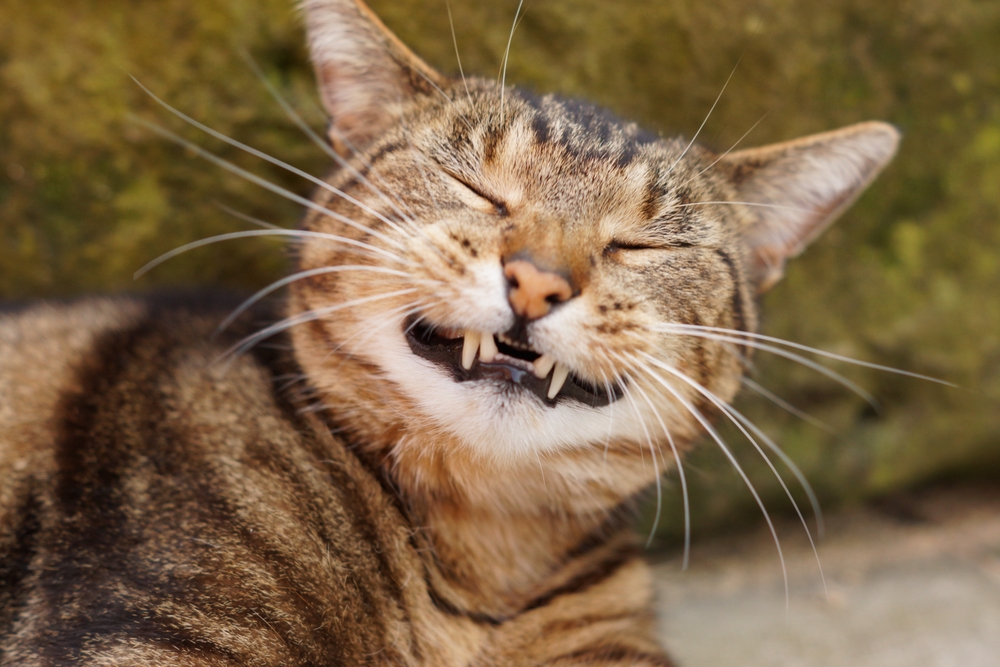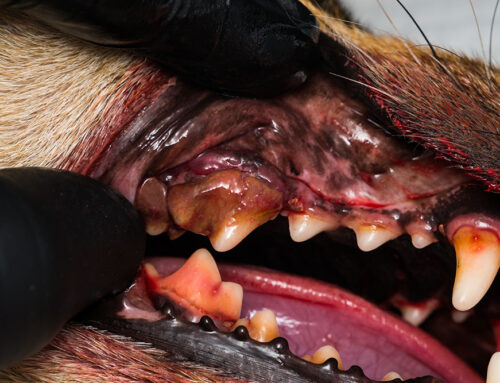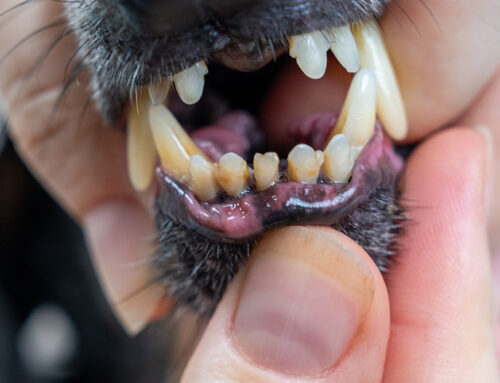Periodontal disease is one of the most common conditions affecting pets and causes discomfort, pain, and tooth loss, if left untreated. As in people, periodontal disease in pets can lead to significant health issues beyond the mouth, including heart, liver, and kidney problems. However, advancements in veterinary dentistry offer hope for saving teeth through innovative treatments like guided tissue regeneration. Our North Bay Veterinary Dentistry team explains guided tissue regeneration, how it works, and how it benefits pets suffering from periodontal disease.
What is guided tissue regeneration for pets?
Guided tissue regeneration is an advanced dental surgery used to regenerate lost or damaged periodontal tissues, including gum tissue, periodontal ligament, and bone. The process involves using a graft and placing a barrier membrane over the affected area to prevent unwanted tissue from invading the healing site, which allows the body to regenerate healthy periodontal tissues.
How does guided tissue regeneration work in pets?
Follow along as our team describes the intricate process of guided tissue regeneration in pets:
- Step 1: Visualizing the pocket– The first step in being able to access the problem spot (a pocket between the tooth root and periodontal bone) is to create a surgical flap that exposes the root and bone.
- Step 2: Cleaning and preparation —Next, we thoroughly clean the entire affected area and remove plaque, tartar, and diseased tissue to create a clean slate for the regeneration process. This uses a combination of ultrasonic and hand scaling wtih root planing to ensure the optimal environment for healing.
- Step 3: Bone Graft – To encourage the periodontal pocket to fill back in with new healthy bone, rather than soft tissue, bone graft material is placed in the pocket. This graft material comes from a bone graft bank and is freeze-dried and demineralized to both sterilize it and to make it more effective as a graft.
- Step 4: Membrane placement — A biocompatible barrier membrane is carefully selected and fitted to the region based on the defect’s size and shape and placed over the damaged area. Barrier membranes are made of materials designed to be biocompatible, meaning they are well-tolerated by the body and promote healing without eliciting an immune response. This membrane serves as a physical barrier, preventing soft tissue from invading the healing site, while allowing space for new bone to grow, and also supports and stabilizes the regenerating tissues, so they will develop in the proper orientation and configuration.
- Step 5: Healing and regeneration — With the barrier membrane in place, the gum flap is sutured into place around the tooth with soft dissolvable sutures. This allows the body’s natural healing processes to begin. Blood vessels from the surrounding tissues penetrate the membrane, bringing oxygen and nutrients to the regeneration site. Mesenchymal stem cells, which have the potential to differentiate into various cell types, migrate to the area and contribute to the formation of new bone, periodontal ligament, and gum tissue.
- Step 6: Cellular activity — Fibroblasts, osteoblasts, and cementoblasts are among the key cell types involved in the regeneration process. Fibroblasts produce collagen fibers, which provide strength and structure to the new periodontal tissues. Osteoblasts and cementoblasts are responsible for depositing minerals and matrix proteins, which facilitate new bone and cementum formation.
- Step 5: Membrane dissolution — As the new periodontal tissues gradually develop and mature, the barrier membrane dissolves. By this point, the regenerated tissues have integrated with the surrounding structures, restoring the architecture and function of the affected area.
- Step 6: Follow-up care — After the procedure, diligent home dental care will be very important to the success of guided tissue regeneration. In addition, regular veterinary check-ups are essential to ensure treatment success and oral health maintenance.
Benefits of guided tissue regeneration for pets with periodontal disease

Guided tissue regeneration provides multiple benefits for pets suffering from periodontal disease, including:
- Tooth preservation — Guided tissue regeneration can help save teeth that would otherwise need extraction because of advanced periodontal disease, preserving your pet’s ability to eat and maintain normal oral function.
- Healthy tissue regeneration — By promoting the growth of new gum tissue, periodontal ligament, and bone, guided tissue regeneration restores the structural integrity of the affected teeth and jaw and improves oral health.
- Pain relief — Guided tissue regeneration can alleviate discomfort and pain associated with inflamed pockets and dental infections, enhancing your pet’s quality of life.
- Prevention of further complications — Left untreated, periodontal disease can lead to systemic health issues in pets, but guided tissue regeneration helps prevent periodontal disease progression and reduces the risk of secondary health problems.
Guided tissue regeneration, by regenerating healthy periodontal tissues and preserving oral health, can be an excellent option to preserve teeth in the right patient. If your pet is showing periodontal disease signs, such as bad breath, gingival inflammation, or difficulty chewing, schedule an appointment with our North Bay Veterinary Dentistry team as soon as possible. We will determine if guided tissue regeneration is the ideal therapy for restoring your pet’s smile.






Leave A Comment